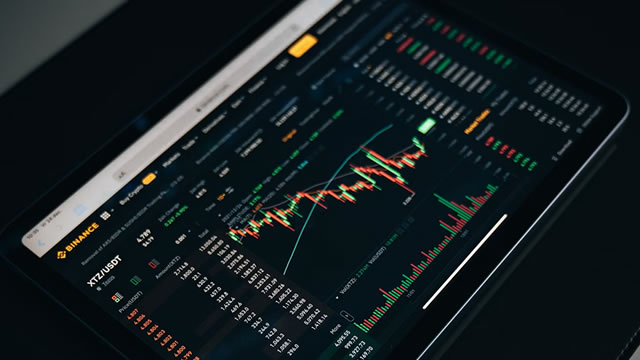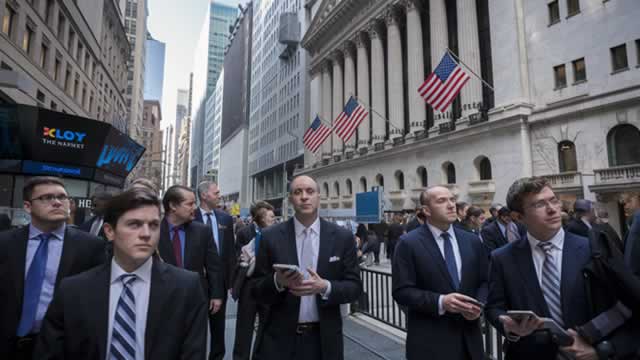The Struggling Markets: A Liquidity Crisis and the Fed’s Role
The financial markets have been experiencing a rollercoaster ride in recent weeks, with many indices failing to reach new all-time highs despite strong earnings reports. This conundrum has left investors puzzled and anxious, leading to a flurry of questions about the underlying causes.
Faltering Global Liquidity
One of the primary reasons for the market’s stagnation is the decreasing global liquidity. Liquidity refers to the ease with which assets can be bought and sold without significantly affecting their price. When liquidity is high, markets function smoothly, allowing for efficient price discovery and minimal volatility. Conversely, when liquidity is low, markets become more fragile, and price swings can be more pronounced.
There are several factors contributing to the current liquidity crunch. One of the most significant contributors is the Federal Reserve’s stance against quantitative easing (QE). QE is a monetary policy tool used to inject liquidity into the financial system by purchasing securities from banks, thereby increasing the amount of money in circulation. The Fed’s decision to wind down its bond-buying program has led to a reduction in the amount of liquidity available to markets.
Private Credit Growth, Fiscal Spending, and the Reduced Reverse Repo Facility
However, it’s essential to note that liquidity has not been disappearing altogether. There have been some positive developments on the liquidity front. For instance, private credit growth has been on the rise, with businesses and consumers borrowing more money to fuel economic activity. Fiscal spending, particularly in the United States, has also increased, providing a boost to the economy and, by extension, to financial markets.
Furthermore, the Federal Reserve has taken steps to mitigate the impact of its QE tapering. For example, it has reduced the reverse repo facility, which is the amount of money that the Fed pays to banks to borrow overnight. This reduction in the reverse repo facility has led to a decrease in the amount of cash that banks have to lend to one another, thus increasing the amount of liquidity in the system.
The Impact on Individuals
So, what does all of this mean for individual investors? In the short term, it could lead to increased volatility in the markets. As liquidity remains tight, even small news events or economic data releases could cause significant price swings. Additionally, it could make it more challenging for investors to execute their trading strategies, particularly those that rely on leverage.
However, it’s essential to keep things in perspective. While market volatility can be unsettling, it’s a normal part of investing. Moreover, the current liquidity crunch is not the first, and it won’t be the last. History has shown that markets eventually adapt to changing liquidity conditions, and new sources of liquidity often emerge.
The Impact on the World
On a larger scale, the current liquidity crunch could have far-reaching consequences for the global economy. For instance, it could lead to a slowdown in economic growth, particularly in emerging markets that are heavily reliant on external financing. It could also make it more challenging for governments and central banks to respond to economic shocks, as they may not have the necessary liquidity to implement effective monetary and fiscal policies.
Furthermore, the current liquidity crunch could exacerbate existing geopolitical tensions, particularly between the United States and China. The United States’ decision to wind down its QE program and raise interest rates has put pressure on China to devalue its currency to maintain its competitiveness. This could lead to a trade war between the two countries, with potentially damaging consequences for the global economy.
Conclusion
In conclusion, the current market turbulence is due in large part to the faltering global liquidity and the Federal Reserve’s stance against QE. While there are some positive developments on the liquidity front, it’s essential to remain vigilant in the face of increased volatility. For individual investors, it may be prudent to adopt a more cautious approach to trading and to maintain a well-diversified portfolio. For the world at large, the current liquidity crunch could lead to economic slowdowns, geopolitical tensions, and increased volatility. However, history has shown that markets and economies eventually adapt to changing liquidity conditions, and new sources of liquidity often emerge.
- Markets have been struggling to reach new highs despite strong earnings reports
- Faltering global liquidity is a primary cause of the market’s stagnation
- The Federal Reserve’s stance against quantitative easing (QE) has led to a reduction in liquidity
- Private credit growth, fiscal spending, and a reduced reverse repo facility have provided some relief
- Individual investors may face increased volatility and challenges executing trading strategies
- The global economy could experience economic slowdowns, geopolitical tensions, and increased volatility





